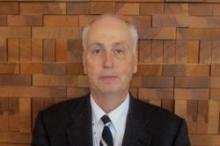VANCOUVER, B.C. – A phototherapy nomogram from the American Academy of Pediatrics is slightly more reliable than the widely used Bhutani nomogram when it comes to deciding if transcutaneous bilirubin measurements need to be followed by a total serum bilirubin blood draw.
The conclusion is based on a retrospective chart review from the BORN (Better Outcomes Through Research for Newborns) network. The team checked 902 transcutaneous bilirubin (TCB) measurements, an estimate of total serum bilirubin (TSB) from a device that scans the skin, against actual total serum bilirubins drawn no more than 2 hours later. Their subjects were infants a mean of 35 hours old, born after at least 35 weeks’ gestation.
When skin scans indicate that newborns are in the 75th percentile for risk of severe hyperbilirubinemia on the Bhutani nomogram, blood is drawn to check the actual level. That approach missed two of 27 infants who actually had TSB levels that required phototherapy, a false-negative rate of 7.4% (95% confidence interval, 0.9%-24.3%).
When the investigators instead deemed blood draws necessary only when TCB levels were 70% or more of the American Academy of Pediatrics (AAP) threshold for phototherapy, the false-negative rate was 3.4%, with just one of 29 infants missed (95% CI 0.8%-17.8%).
Overall, the team analyzed 7,737 TCB values in a total of 4,993 infants; only a small number led to TSB blood work. They concluded that the Bhutani method would avoid unnecessary TSB blood draws in about 80% of infants, while the AAP nomogram would avoid unnecessary blood draws in about 85%.
"TCB seems like it should be a perfect thing, but a lot of people don’t really do it because they don’t believe the results; we wanted to a do a real-world study in a bunch of nurseries to see how well it really works. Our results indicate that TCB works pretty well," and that "the 70% of phototherapy threshold might be as good if not a little bit better than [Bhutani] in terms of avoiding [unnecessary] blood draws. I’m wondering if we should switch to [it]," said lead investigator Dr. James Taylor, medical director of the University of Washington’s newborn nursery in Seattle.
"The false negatives weren’t very far off. I think the highest TSB level we had was 18 mg/dL," he said at the Academic Pediatric Societies annual meeting.
A larger study is needed to confirm the difference in false negatives, he cautioned.
The study was retrospective, so clinicians used whatever TCB device they wanted. More than 60% of the infants were white, and more than 80% were born after 38 weeks.
Dr. Taylor is also working on a smart phone app to measure TCB.
He said he has no disclosures. The BORN research network is funded by the Academic Pediatric Association.


